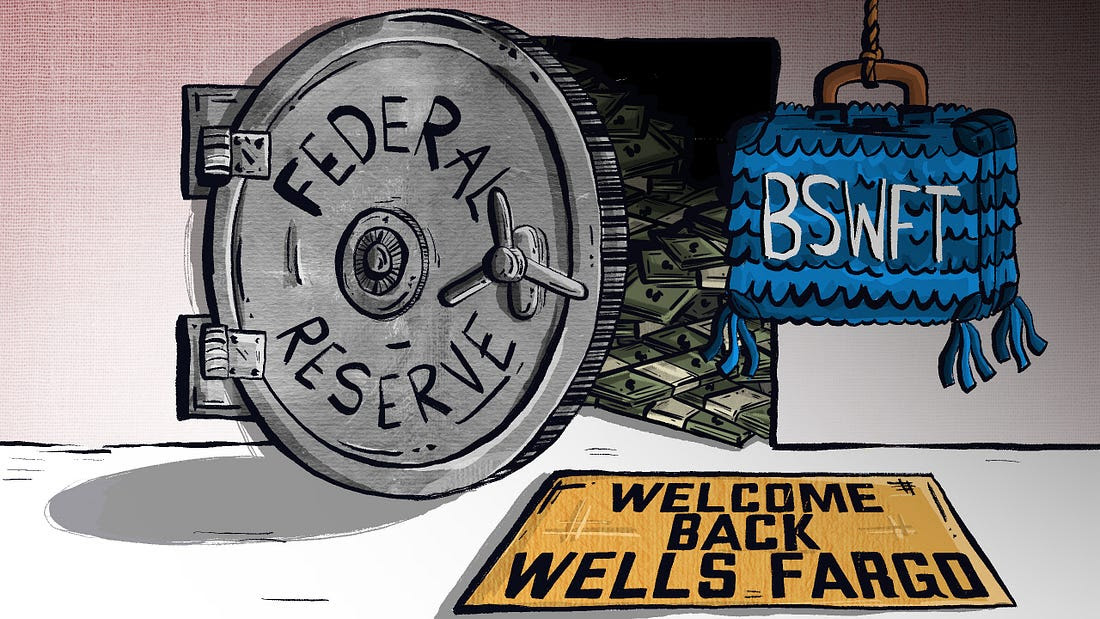Business
What an Effective All-of-Government Program Review Might Look Like

More than once in this space I’ve advocated for a comprehensive all-of-government review to find and eliminate waste and corruption. So it’s about time I set finger to keyboard and started mapping out how such a review might unfold.
Why is it just this moment in history that finds me so passionate about reviews?
Canada’s government spends more money than it receives. I know that’s hardly breaking news, but Ottawa’s reckless and frenzied race to max out every credit card in the known universe has driven the federal debt to $1.24 trillion. That’s 42.1 percent of GDP.¹
Among the biggest expenses? Employment growth in the federal civil service. Parliament employed 276,367 people in 2015 but by 2023 that had exploded to 370,368. That 94,001 increase amounts to a jump of 34 percent. For context, Canada’s overall population during that time increased by just 12 percent.
Given that the average weekly earnings for individuals employed in federal government public administration was $1,779 in 2023, just covering salaries for those extra 94,001 workers cost us $8.7 billion through that year.
But workers cost us much more than just their salaries. There are pension and CPP contributions, EI premiums, health and dental benefits, and indirect costs like office accommodations and training. All that could easily add another $50,000 per employee. Multiply that by all the new hires, and the total cost of those extra 94,001 workers has ballooned to $13.4 billion. That would be nearly a quarter of the deficit from the 2024 $61.9 billion fall update.² (Chrystia Freeland may not have been the one to officially announce that number, but she and her boss were the ones who got us there.)
Of course using a lottery to select, say, two out of every five bureaucrats for firing won’t give us the result we’re after. We want to improve government, not cripple it. (Although, to be completely honest, I find the idea of random mass firings way more attractive than I should.)
A successful review will identify programs that aren’t delivering cost-effective value to the people of Canada. Some of those programs will need changes and others should disappear altogether. For some, appropriate next-steps will come to light only through full audits.
But success will also require creating an organizational culture that earns the respect and buy-in of department insiders, stakeholders, and the general public.
The rest of this post will present some foundational principles that can make all that attainable. I should note that this post was greatly enhanced from input using the invaluable experience of a number of The Audit subscribers.
Use Transparent and Well-Defined Goals
Consensus should always be the ideal, but clarity is non-negotiable. Program advocates must be prepared to convincingly explain what they’re trying to achieve, including setting clear metrics for success and failure. Saving taxpayer funds to avoid economic catastrophe is obviously a primary goal. But more effective governance and more professional service delivery also rank pretty high.
Questions to ask and answer before, during, and after review operations:
- Does the program under review fall within the constitutional and operational scope of the federal government?
- Is there overlap with other programs or other levels of government?
- Are the original policy goals that inspired the program still relevant?
- Is the program in its current form the most effective and economical way of achieving those goals?
- Are the changes you’re proposing sustainable or will they sink back into the swamp and disappear as soon as no one’s looking?
Perhaps the most important goal of them all should be getting the job done in our lifetimes. We’ve all seen commissions, working groups, and subcommittees that drag on through multiple years and millions of dollars. You don’t want to make dumb mistakes, but that doesn’t mean you can’t adopt new tools or methodologies (like Agile) to speed things up.
Transparency is a fundamental requirement for public and institutional buy-in. That means publishing program goals and processes along with regular updates. It also means being responsive to reasonable requests for information. Fortunately, someone (Al Gore?) invented the internet, so it should be possible to throw together an interactive browser-based dashboard that keeps the rest of us in the loop and allows for feedback.
Over the years, I’ve personally built nice(ish) websites in minutes, even sites that use pipelines for dynamically pulling data from third-party sources. This isn’t rocket science – especially when you’re not dealing with sensitive private data.
Be Non-Partisan
Going to war against the complexity, toxic politics, incompetence, institutional inertia, NIMBY-ism, and sheer scope of government waste is not for the faint of heart. But setting yourself up as the Righteous Redeemer of only 40 percent of Canadians will make things infinitely more difficult.
Key project positions have to be filled by the most capable individuals from anywhere on the political spectrum. And proposals for cuts should rise above political gamesmanship. It may be unreasonable to expect friendly cross-the-aisle collaboration, but the value of the eventual results should be so self-evident that they’re impossible to oppose in good faith.
Frankly, if you’d ask me, any government that managed to miraculously rise above partisan silliness and genuinely put the country’s needs first would probably guarantee itself reelection for a generation.
Be Efficient
Don’t reinvent the wheel. If internal or external departmental audits already exist, then incorporate their findings. Similarly, make use of any existing best-practice policies, standards, and guidance from bodies like the Office of the Comptroller General and the Treasury Board of Canada Secretariat.
It’ll be important to know who really controls the levers of power within government. So make sure you’ve got members of key insider organizations like the Privy Council Office and the Committee of Senior Officials on speed dial.
Also, incorporate forward-thinking elements into new programs by including sunset clauses, real-time monitoring, and ongoing mini reviews. To keep things moving fast, implement promising auditing and analysis ideas early as pilot programs. If they work, great. Expand. If they don’t work, bury ‘em. No harm done.
AI-driven insights can probably speed up early steps of the review process. For instance, before you even book your first meeting with the dreaded Assistant Deputy Minister, feed the department’s program spending and outcomes data to an AI model and tell it to look for evidence-based inefficiencies and redundancy. The results can set the agenda for the conversation you eventually do have.
You can similarly build simple software models that search for optimal spending balances across the whole government. Complex multivariate calculations that once required weeks of hard math can now be done in seconds.
A friend who administrates a private high school recently tasked ChatGPT with calculating the optimal teaching calendar for the coming school year. After a few seconds, the perfect schedule showed up on-screen. The woman who, in previous years, had spent countless hours on the task, literally laughed with excitement. “What are you so happy about?” My friend asked. “This thing just took your job.”
Consult the Civil Service (and the public)
I know exactly what you’re thinking: is there a better way to destroy any process than burying it under endless rounds of public consultations (followed by years of report writing)? Trust me, I feel your pain.
But it’s 2025. Things can be different now. In fact, contrary to the way it might look to many good people inside the public sector, things can be a lot better.
This consultation would be 100 percent digital and its main stage need last no longer than 60 days. Here’s how it’ll go:
- Build a website, make a lot of noise to attract attention, and invite all Canadians – with a particular focus on current and former civil servants.
- Require login that includes a physical address and (perhaps) a government-issued ID. This will prevent interest groups from gaming the system.
- Use AI tools to identify boilerplate cut-and-paste submissions and flag them for reduced relevance.
- Encourage (but don’t require) participants to identify themselves by their background and employment to permit useful data segmentation. This will make it easier to identify expert submissions.
- Provide ongoing full public access to all submissions. Private information would be redacted, of course. And whistle blowers could have specialized, extra-secure access.
- Use traditional software analytics to flag especially interesting submissions and analyze all submissions using AI models to produce deeper summaries and analyses.
- Publish ongoing overviews of the results.
- [Other stuff…]
- Pick out a nice suit/dress for your Order of Canada investiture ceremony.
There’s absolutely nothing revolutionary about any of this (except the Order of Canada bit). The City of Toronto has been doing most of it for years.
Subscribe to The Audit.
For the full experience, upgrade your subscription.
Automotive
Federal government should swiftly axe foolish EV mandate

From the Fraser Institute
Two recent events exemplify the fundamental irrationality that is Canada’s electric vehicle (EV) policy.
First, the Carney government re-committed to Justin Trudeau’s EV transition mandate that by 2035 all (that’s 100 per cent) of new car sales in Canada consist of “zero emission vehicles” including battery EVs, plug-in hybrid EVs and fuel-cell powered vehicles (which are virtually non-existent in today’s market). This policy has been a foolish idea since inception. The mass of car-buyers in Canada showed little desire to buy them in 2022, when the government announced the plan, and they still don’t want them.
Second, President Trump’s “Big Beautiful” budget bill has slashed taxpayer subsidies for buying new and used EVs, ended federal support for EV charging stations, and limited the ability of states to use fuel standards to force EVs onto the sales lot. Of course, Canada should not craft policy to simply match U.S. policy, but in light of policy changes south of the border Canadian policymakers would be wise to give their own EV policies a rethink.
And in this case, a rethink—that is, scrapping Ottawa’s mandate—would only benefit most Canadians. Indeed, most Canadians disapprove of the mandate; most do not want to buy EVs; most can’t afford to buy EVs (which are more expensive than traditional internal combustion vehicles and more expensive to insure and repair); and if they do manage to swing the cost of an EV, most will likely find it difficult to find public charging stations.
Also, consider this. Globally, the mining sector likely lacks the ability to keep up with the supply of metals needed to produce EVs and satisfy government mandates like we have in Canada, potentially further driving up production costs and ultimately sticker prices.
Finally, if you’re worried about losing the climate and environmental benefits of an EV transition, you should, well, not worry that much. The benefits of vehicle electrification for climate/environmental risk reduction have been oversold. In some circumstances EVs can help reduce GHG emissions—in others, they can make them worse. It depends on the fuel used to generate electricity used to charge them. And EVs have environmental negatives of their own—their fancy tires cause a lot of fine particulate pollution, one of the more harmful types of air pollution that can affect our health. And when they burst into flames (which they do with disturbing regularity) they spew toxic metals and plastics into the air with abandon.
So, to sum up in point form. Prime Minister Carney’s government has re-upped its commitment to the Trudeau-era 2035 EV mandate even while Canadians have shown for years that most don’t want to buy them. EVs don’t provide meaningful environmental benefits. They represent the worst of public policy (picking winning or losing technologies in mass markets). They are unjust (tax-robbing people who can’t afford them to subsidize those who can). And taxpayer-funded “investments” in EVs and EV-battery technology will likely be wasted in light of the diminishing U.S. market for Canadian EV tech.
If ever there was a policy so justifiably axed on its failed merits, it’s Ottawa’s EV mandate. Hopefully, the pragmatists we’ve heard much about since Carney’s election victory will acknowledge EV reality.
Business
Prime minister can make good on campaign promise by reforming Canada Health Act

From the Fraser Institute
While running for the job of leading the country, Prime Minister Carney promised to defend the Canada Health Act (CHA) and build a health-care system Canadians can be proud of. Unfortunately, to have any hope of accomplishing the latter promise, he must break the former and reform the CHA.
As long as Ottawa upholds and maintains the CHA in its current form, Canadians will not have a timely, accessible and high-quality universal health-care system they can be proud of.
Consider for a moment the remarkably poor state of health care in Canada today. According to international comparisons of universal health-care systems, Canadians endure some of the lowest access to physicians, medical technologies and hospital beds in the developed world, and wait in queues for health care that routinely rank among the longest in the developed world. This is all happening despite Canadians paying for one of the developed world’s most expensive universal-access health-care systems.
None of this is new. Canada’s poor ranking in the availability of services—despite high spending—reaches back at least two decades. And wait times for health care have nearly tripled since the early 1990s. Back then, in 1993, Canadians could expect to wait 9.3 weeks for medical treatment after GP referral compared to 30 weeks in 2024.
But fortunately, we can find the solutions to our health-care woes in other countries such as Germany, Switzerland, the Netherlands and Australia, which all provide more timely access to quality universal care. Every one of these countries requires patient cost-sharing for physician and hospital services, and allows private competition in the delivery of universally accessible services with money following patients to hospitals and surgical clinics. And all these countries allow private purchases of health care, as this reduces the burden on the publicly-funded system and creates a valuable pressure valve for it.
And this brings us back to the CHA, which contains the federal government’s requirements for provincial policymaking. To receive their full federal cash transfers for health care from Ottawa (totalling nearly $55 billion in 2025/26) provinces must abide by CHA rules and regulations.
And therein lies the rub—the CHA expressly disallows requiring patients to share the cost of treatment while the CHA’s often vaguely defined terms and conditions have been used by federal governments to discourage a larger role for the private sector in the delivery of health-care services.
Clearly, it’s time for Ottawa’s approach to reflect a more contemporary understanding of how to structure a truly world-class universal health-care system.
Prime Minister Carney can begin by learning from the federal government’s own welfare reforms in the 1990s, which reduced federal transfers and allowed provinces more flexibility with policymaking. The resulting period of provincial policy innovation reduced welfare dependency and government spending on social assistance (i.e. savings for taxpayers). When Ottawa stepped back and allowed the provinces to vary policy to their unique circumstances, Canadians got improved outcomes for fewer dollars.
We need that same approach for health care today, and it begins with the federal government reforming the CHA to expressly allow provinces the ability to explore alternate policy approaches, while maintaining the foundational principles of universality.
Next, the Carney government should either hold cash transfers for health care constant (in nominal terms), reduce them or eliminate them entirely with a concordant reduction in federal taxes. By reducing (or eliminating) the pool of cash tied to the strings of the CHA, provinces would have greater freedom to pursue reform policies they consider to be in the best interests of their residents without federal intervention.
After more than four decades of effectively mandating failing health policy, it’s high time to remove ambiguity and minimize uncertainty—and the potential for politically motivated interpretations—in the CHA. If Prime Minister Carney wants Canadians to finally have a world-class health-care system then can be proud of, he should allow the provinces to choose their own set of universal health-care policies. The first step is to fix, rather than defend, the 40-year-old legislation holding the provinces back.
-

 International2 days ago
International2 days agoChicago suburb purchases childhood home of Pope Leo XIV
-

 Daily Caller2 days ago
Daily Caller2 days agoBlackouts Coming If America Continues With Biden-Era Green Frenzy, Trump Admin Warns
-

 Daily Caller2 days ago
Daily Caller2 days ago‘I Know How These People Operate’: Fmr CIA Officer Calls BS On FBI’s New Epstein Intel
-

 National1 day ago
National1 day agoLiberal ‘Project Fear’ A Longer Con
-

 Censorship Industrial Complex22 hours ago
Censorship Industrial Complex22 hours agoCanadian pro-freedom group sounds alarm over Liberal plans to revive internet censorship bill
-

 Crime22 hours ago
Crime22 hours agoTrump supporters cry foul after DOJ memo buries the Epstein sex trafficking scandal
-

 Daily Caller22 hours ago
Daily Caller22 hours agoTrump Issues Order To End Green Energy Gravy Train, Cites National Security
-

 Daily Caller14 hours ago
Daily Caller14 hours agoUSAID Quietly Sent Thousands Of Viruses To Chinese Military-Linked Biolab









